EN61375-2-3{2015}e.pdf
European foreword
Endorsement notice
Annex ZA (normative) Normative references to international publications with their corresponding European publications
30328570-VOR.pdf
CONTENTS
FOREWORD
INTRODUCTION
1 Scope
2 Normative references
3 Terms, definitions, abbreviations, acronyms, and conventions
3.1 Terms and definitions
3.2 Abbreviations and acronyms
3.3 Conventions
3.3.1 Base of numeric values
3.3.2 Character strings and citations
3.3.3 Naming conventions
3.3.4 Diagram conventions
3.3.5 Annotation of data structures
4 Architecture
4.1 General
4.2 Physical train architecture (system breakdown)
4.2.1 General
4.2.2 Train network architectures
4.2.3 Closed Trains
4.2.4 Directions
4.2.5 Consist and vehicle basic properties
4.3 Logical Train Architecture (Functional Breakdown)
4.3.1 General
4.3.2 Service classification
4.3.3 Operational Services Overview
4.3.4 Service Provider
5 Common ETB framework
5.1 General
5.1.1 Overview
5.1.2 Interoperability
5.2 CSTINFO telegram
5.2.1 General
5.2.2 Closed train support (Option)
5.2.3 Protocol
5.2.4 CSTINFO classes
5.2.5 CSTINFO Notification Message
5.2.6 CSTINFO Request
5.3 Train topology database
5.3.1 General
5.3.2 Computation of the TTDB
5.3.3 Data structure
5.3.4 Train Topology Database for multiple ETBs (Option)
5.4 Service Addressing
5.4.1 General
5.4.2 TCN Domain Name System (TCN-DNS)
5.4.3 TCN Domain Names
5.4.4 TCN-URI Scheme
5.4.5 Mapping TCN-URI to IP address
5.4.6 Support of other URI schemas
5.5 TCN-DNS Server
5.5.1 General
5.5.2 Architecture
5.5.3 Functional address resolution
5.5.4 Protocol
5.5.5 Multiple ETBs
5.6 Data exchange
5.6.1 General
5.6.2 Operational network communication
5.6.3 OMTS network communication
5.6.4 Quality of Service (QoS)
5.7 Service discovery
5.8 Train Info Service
6 Services of the communication profile – ETB Control Service
6.1 General
6.2 Communication model
6.3 ECSP Supervision
6.4 ECSP Interconnection
6.4.1 General
6.4.2 ETBCTRL telegram exchange selection
6.4.3 ETBCTRL telegram transmission
6.4.4 Structure of the ETBCTRL telegram
6.4.5 Operational train directory computation process
6.5 Function “Leading”
6.5.1 General
6.5.2 Function primitives
6.5.3 ECSP to ECSP protocol
6.6 Function Confirmation/Correction
6.6.1 General
6.6.2 Function primitives
6.6.3 ECSP to ECSP protocol
6.6.4 State diagram
6.6.5 ECSC Failure
6.7 Computation of the operational train directory
6.7.1 General
6.7.2 Action setCorrInfo
6.7.3 Action computeOpTrnDir
6.8 Function Sleep Mode (Option)
6.8.1 General
6.8.2 Sleep Mode Use Case (informal)
6.8.3 Exclusivity
6.8.4 Function primitives
6.8.5 ECSP to ECSP protocol
Annexes
Annex A (normative) Train Real-Time Data Protocol (TRDP)
A.1 General
A.2 Lower Layers
A.2.1 Data link layer
A.2.2 Network Layer
A.2.3 Transport Layer
A.3 TRDP FCS Computation
A.4 Interaction between TRDP user and TRDP Layer
A.5 Communication Identifier (ComId)
A.6 Process Data
A.6.1 Communication model
A.6.2 Roles
A.6.3 Communication pattern
A.6.4 Addressing
A.6.5 PD-PDU
A.6.6 Interaction between application and TRDP protocol layer
A.6.7 Topography counter check
A.6.8 State Machine
A.7 Message Data
A.7.1 Communication model
A.7.2 Roles
A.7.3 Communication pattern
A.7.4 Addressing
A.7.5 MD-PDU
A.7.6 Interaction between application and TRDP layer
A.7.7 Topography counter check
A.7.8 MD protocol state machine
A.7.9 TCP Connection Handling
A.8 Message data echo server (option)
Annex B (normative) Safe Data Transmission (SDTv2)
B.1 General
B.2 Overview of SDTv2 (informal)
B.3 Safety functional requirements
B.4 Safety measures
B.5 Operational states of the SDTv2 channel
B.6 Data presentation
B.7 SC-32
B.8 SID
B.9 Vital Data Packet
B.10 Exclusivity
B.11 Configuration time parameters
B.12 Safe data source (SDSRC)
B.12.1 General
B.12.2 Safe Data Preparation (Application)
B.12.3 Safe data sending
B.13 Safe data sink (SDSINK)
B.13.1 General
B.13.2 Definitions
B.13.3 SDSINK States
B.13.4 VDP Sampling
B.13.5 VDP Integrity Check
B.13.6 Sink time supervision
B.13.7 Guard time check
B.13.8 Latency monitoring
B.13.9 Channel monitoring
B.13.10 SDTv2 Application Interface
B.13.11 Change of operational train composition
B.14 Diagnosis and statistics
B.15 Safe data transmission over MVB (informative)
B.15.1 General
B.15.2 MVB-VDP
B.15.3 SDTV2 protocol deviations for MVB
B.16 SDTv2 with TRDP message data
Annex C (informative) Train Real-Time Data Protocol Configuration (TRDP)
C.1 General
C.2 Device Parameters
C.3 Device Configuration Parameters
C.4 Bus Interface List
C.4.1 General
C.4.2 Bus Interface Configuration
C.5 Mapped Device Parameters
C.5.1 General
C.5.2 Mapped Bus Interface Parameters
C.6 Communication Parameters (ComPar)
C.6.1 General
C.6.2 Default Communication Parameters
C.7 DataSet Parameters
C.7.1 General
C.7.2 DataSet Element
C.7.3 Examples of DataSets
Annex D (informative) Access to End Device (ED) statistics
D.1 General
D.2 Structures
D.2.1 General
D.2.2 tlc_getSubsStatistics
D.2.3 tlc_getPubStatisticsTRDP process data publish statistic
D.2.4 tlc_getUdpListStatistics, tlc_getTcpListStatistics
D.2.5 tlc_getRedStatistics
D.3 ED interface for statistic data access
D.3.1 General
D.3.2 TRDP interface
Annex E (informative) Service interface
E.1 General
E.2 Service provider
E.2.1 Proxies
E.2.2 Performance
E.3 ECSP interface
E.3.1 General
E.3.2 ECSP control telegram
E.3.3 ECSP status telegram
E.3.4 ECSP Confirmation/Correction Request
E.4 TTDB manager interface
E.4.1 General
E.4.2 TTDB status information
E.4.3 TTDB notification
E.4.4 TTDB information – train directory
E.4.5 TTDB information – static consist information
E.4.6 TTDB information – train network directory information
E.4.7 Operational train directory information
E.4.8 Read TTDB
E.5 DNS server interface
E.5.1 DNS standard interface
E.5.2 DNS TCN interface
E.6 ETBN control interface
E.6.1 General
E.6.2 ETBN control and status data
E.6.3 ETBN train network directory
Annex F (normative) Communication profile conformance test guideline
F.1 General
F.2 Scope of conformance test
F.3 Conformance test overview
F.4 Test laboratory
F.4.1 General
F.4.2 Tasks
F.5 Guideline for writing conformance test specifications
F.5.1 Overview of the main components
F.5.2 Protocol Implementation Conformance Statement (PICS)
F.5.3 Abstract test architecture
F.5.4 Protocol Implementation eXtra Information for Testing (PIXIT)
F.5.5 Test suite structure
F.6 Abstract test architecture (option)
F.6.1 General
F.6.2 Test architecture with one ETB
F.6.3 Test architecture for multiple ETB
F.6.4 Set-up for automatic test
F.7 Test of conformity to the common ETB framework
F.7.1 General
F.7.2 Test of CSTINFO telegram
F.7.3 Test of TTDB
F.7.4 Test of service addressing and TCN-DNS server
F.7.5 Test of data exchange
F.7.6 Test of service discovery
F.7.7 Test of train info service
F.8 ETB Control Service conformity test
F.8.1 General
F.8.2 Test control interface for the test of ETB control services
F.9 Echo function
F.9.1 General
F.9.2 TRDP echo test
F.9.3 Reverse-Echo test
F.10 Statement of conformity
Annex G (informative) SNMP Management Information Base (MIB)
G.1 General
G.2 TTDB-MIB
G.3 TRDP-MIB
Bibliography
Figures
Figure 1 – IEC 61375-2-3 as connecting element between train backbone and application
Figure 2 – Train structure in accordance to IEC 61375-1 (example)
Figure 3 – Train structure seen from viewpoint of the communication profile (example)
Figure 4 – Train network (example)
Figure 5 – Possible couplings of operational network and multimedia network
Figure 6 – Gateway between operational network and multimedia network (example)
Figure 7 – Example: three coupled Consists
Figure 8 – Example: Closed Train
Figure 9 – Service classification
Figure 10 – CSTINFO notification data
Figure 11 – CSTINFOCTRL telegram
Figure 12 – TTDB management block diagram
Figure 13 – TTDB Content
Figure 14 – TTDB computation block diagram
Figure 15 – Train directory computation state diagram
Figure 16 – TTDB class diagram (example)
Figure 17 – TTDB adoption (in this example shown for the first consist)
Figure 18 – TCN-DNS name space with division into zones
Figure 19 – TCN-URI Schema
Figure 20 – Directions, orientations and numbers in train
Figure 21 – TCN-URI resolving in a train
Figure 22 – DNS protocol (case a without, case b with TTDB interrogation)
Figure 23 – ETB control service model
Figure 24 – ETBCTRL telegram exchange
Figure 25 – ETBCTRL telegram
Figure 26 – Operational train directory computation block diagram
Figure 27 – ETBCTRL processing state diagram
Figure 28 – Leading sequence diagram
Figure 29 – Leading vehicle function state machine block diagram
Figure 30 – State diagram of leading function
Figure 31 – Confirmation sequence diagram
Figure 32 – Confirmation/correction function state machine block diagram
Figure 33 – Correction/confirmation protocol sequence chart (example)
Figure 34 – Unconfirm protocol sequence chart (example)
Figure 35 – Confirmation/correction state diagram
Figure 36 – Action “setCorrInfo” block diagram
Figure 37 – Train composition consistency check examples
Figure 38 – Computation of the operational train directory
Figure 39 – computeOpTrnDir state chart
Figure 40 – Use case “sleep mode” state diagram
Figure 41 – Sleep control sequence diagram
Figure 42 – Sleep control function state machine block diagram
Figure 43 – Sleep request protocol sequence chart (example)
Figure 44 – Sleep control state diagram
Figure A.1 – Overview of the protocol stack
Figure A.2 – FCS Computation
Figure A.3 – FCS Table
Figure A.4 – TRDP service model
Figure A.5 – PD push pattern (point to point)
Figure A.6 – PD push pattern (point to multipoint)
Figure A.7 – PD pull pattern (point to point, sink knows source)
Figure A.8 – PD pull pattern (multipoint to point, sink does not know source)
Figure A.9 – PD pull pattern (point to multipoint, sink knows source)
Figure A.10 – PD pull pattern (multipoint to multipoint, sink does not know source)
Figure A.11 – PD-PDU
Figure A.12 – Interaction sequence chart for PD pull pattern
Figure A.13 – Interaction sequence chart for PD push pattern
Figure A.14 – Interaction sequence chart for redundant PD handling
Figure A.15 – PD State diagram publisher
Figure A.16 – PD State diagram requester
Figure A.17 – PD State diagram subscriber
Figure A.18 – Message data transfer options
Figure A.19 – MD-PDU
Figure A.20 – Interaction sequence chart
Figure A.21 – TRDP layer MD caller state chart
Figure A.22 – TRDP layer MD replier state chart
Figure A.23 – TRDP Layer MD telegram reception
Figure B.1 – SDTV2 Channel
Figure B.2 – SDTv2 Channel States
Figure B.3 – SC-32 Computation
Figure B.4 – SC-32 Table
Figure B.5 – SID Computation
Figure B.6 – ETB-VDP
Figure B.7 – Format of ETB-VDP
Figure B.8 – Redundancy Group (Example with 2 SDSRC)
Figure B.9 – SDSINK state diagram
Figure B.10 – Window of expected SSC (example)
Figure B.11 – Guard time violation (example)
Figure B.12 – Latency violation sequence chart (example)
Figure B.13 – MVB-VDP
Figure B.14 – Format of MVB-VDP
Figure C.1 – TRDP configuration block diagram
Figure C.2 – Exchange Parameters with the central key ComId
Figure C.3 – DataSet structure
Figure D.1 – TRDP statistics data telegrams
Figure E.1 – Service interfaces block diagram
Figure E.2 – ECSP interface telegrams
Figure E.3 – ECSP control data
Figure E.4 – ECSP status data
Figure E.5 – ECSP confirm/correction request data
Figure E.6 – ECSP confirm/correction reply data
Figure E.7 – TTDB manager interface telegrams
Figure E.8 – TCN-URI resolving
Figure E.9 – DNS resolving request data
Figure E.10 – DNS resolving reply data
Figure E.11 – ETBN control interface telegrams
Figure E.12 – ETBN control request data
Figure E.13 – ETBN status reply data
Figure F.1 – Consist interface on ETB level
Figure F.2 – Scope of conformance test
Figure F.3 – Abstract test architecture (1 ETB)
Figure F.4 – Abstract test architecture (2 ETBs)
Figure F.5 – Unit under test abstract architecture
Figure F.6 – Conformance test control telegram
Figure F.7 – Conformance test control telegram data
Figure F.8 – Conformance test status telegram
Figure F.9 – Conformance test status telegram data
Figure F.10 – (Un-)confirmation request
Figure F.11 – Conformance test confirmation/correction request data
Figure F.12 – Conformance test confirmation/correction reply data
Figure F.13 – Conformance test operational train directory request
Figure F.14 – Conformance test operational train directory request data
Figure F.15 – Conformance test operational train directory reply data
Figure F.16 – Echo test
Figure F.17 – Reverse-Echo test
Figure F.18 – Conformance test message data telegram data
Tables
Table 1 – Data type keywords and notations
Table 2 – ETB control service
Table 3 – Train directory computation – triggers
Table 4 – Train directory computation – guards
Table 5 – Train directory computation – actions
Table 6 – TCN URI basic syntax
Table 7 – General schema syntax
Table 8 – Device label syntax
Table 9 – Device label definition
Table 10 – vehicle label syntax
Table 11 – Veh (vehicle) label definition
Table 12 – Consist label syntax
Table 13 – Consist label definition
Table 14 – Closed train label syntax
Table 15 – Closed train label definition
Table 16 – Train label syntax
Table 17 – Train label definition
Table 18 – General decomposition of IP MC groups addresses
Table 19 – Decomposition of all-train groups
Table 20 – Decomposition of ETB-related groups
Table 21 – Decomposition of consist-limited groups
Table 22 – Well-known TCN-URI
Table 23 – TCN-URI resolving – Example 1
Table 24 – TCN-URI resolving – Example 2
Table 25 – TCN-URI resolving – Example 3
Table 26 – TCN-URI resolving – Example 4
Table 27 – Data class priorities
Table 28 – ETBCTRL processing – triggers
Table 29 – ETBCTRL processing – guards
Table 30 – ETBCTRL processing – actions
Table 31 – Leading function primitives – F_leadingStatusRequest
Table 32 – Leading function primitives – F_leadingSetRequest
Table 33 – Leading function primitives – F_leadingResetRequest
Table 34 – Leading function control flags
Table 35 – Leading function – triggers
Table 36 – Leading function – guards
Table 37 – Leading function – actions
Table 38 – Confirmation function primitives – F_confirmStatusRequest
Table 39 – Confirmation function primitives – F_confirmRequest
Table 40 – Confirmation function primitives – F_unconfirmRequest
Table 41 – Confirmation function control flags
Table 42 – Confirmation/correction state diagram – Trigger
Table 43 – Confirmation/correction state diagram – Guard
Table 44 – Confirmation/correction state diagram – Action
Table 45 – Confirmation/Correction rules
Table 46 – Operation Train Directory computation state diagram – Trigger
Table 47 – Operation Train Directory computation state diagram – Guards
Table 48 – Operation Train Directory computation state diagram – Action
Table 49 – Example of operational train directory
Table 50 – ETBN operating conditions
Table 51 – Sleep mode function primitives – F_sleepStatus
Table 52 – Sleep mode function primitives – F_sleepRequest
Table 53 – Sleep mode function primitives – F_sleepCancel
Table 54 – Sleep mode function primitives – F_nodeAwake
Table 55 – Sleep control function control flags
Table 56 – Sleep control state diagram – trigger
Table 57 – Sleep control state diagram – guards
Table 58 – Sleep control state diagram – action
Table A.1 – UDP/TCP port assignments
Table A.2 – Reserved ComIds
Table A.3 – PD-PDU parameters
Table A.4 – TRDP service primitives
Table A.5 – Topography counter check
Table A.6 – PD publisher state diagram – guards
Table A.7 – PD publisher state diagram – triggers
Table A.8 – PD publisher state diagram – actions
Table A.9 – PD publisher state diagram – states
Table A.10 – PD publisher state diagram – guards
Table A.11 – PD requester state diagram – triggers
Table A.12 – PD requester state diagram – actions
Table A.13 – PD requester state diagram – states
Table A.14 – PD subscriber state diagram – triggers
Table A.15 – PD subscriber state diagram – guards
Table A.16 – PD subscriber state diagram – actions
Table A.17 – PD subscriber state diagram – states
Table A.18 – MD-PDU parameters
Table A.19 – TRDP service primitives – Caller
Table A.20 – TRDP service primitives – Replier
Table A.21 – Topography counter check
Table A.22 – MD caller state diagram – triggers
Table A.23 – MD caller state diagram – guards
Table A.24 – MD caller state diagram – actions
Table A.25 – MD caller state diagram – states
Table A.26 – MD replier state diagram – triggers
Table A.27 – MD replier state diagram – guards
Table A.28 – MD replier state diagram – actions
Table A.29 – MD replier state diagram – states
Table A.30 – MD receiver state diagram – triggers
Table A.31 – MD receiver state diagram – guards
Table A.32 – MD receiver state diagram – actions
Table A.33 – MD receiver state diagram – states
Table B.1 – Deployed measures to communication errors
Table B.2 – SDSINK state diagram – triggers
Table B.3 – SDSINK state diagram – guards
Table B.4 – SDSINK state diagram – operations
Table B.5 – SDTV2 statistic counters
Table C.1 – Attributes for device tag
Table C.2 – Attributes for device-configuration tag
Table C.3 – Attributes for bus-interface tag
Table C.4 – Attributes for trdp-process tag
Table C.5 – Default values for thread/task
Table C.6 – Attributes for pd-com-parameter tag
Table C.7 – Default values for pd-com-parameter
Table C.8 – Attributes for md-com-parameter tag
Table C.9 – Default values for md-com-parameter
Table C.10 – Attributes for telegram tag
Table C.11 – Attributes for md-parameter tag
Table C.12 – Attributes for pd-parameter tag
Table C.13 – Attributes for source tag
Table C.14 – Attributes for destination tag
Table C.15 – Attributes for sdt-parameter tag
Table C.16 – Default values for sdt-parameter tag
Table C.17 – Attributes for mapped-device tag
Table C.18 – Attributes for mapped-bus-interface tag
Table C.19 – Attributes for mapped-telegram tag
Table C.20 – Attributes for mapped-pd-parameter tag
Table C.21 – Attributes for mapped-source tag
Table C.22 – Attributes for mapped-destination tag
Table C.23 – Attributes for mapped-SDTv2-parameter tag
Table C.24 – Attributes for com-parameter tag
Table C.25 – Default communication parameters
Table C.26 – Basic data types
Table C.27 – Attributes for data-set tag
Table C.28 – Attributes for element tag
Table C.29 – Use of element array size
Table F.1 – Conformance testing summary
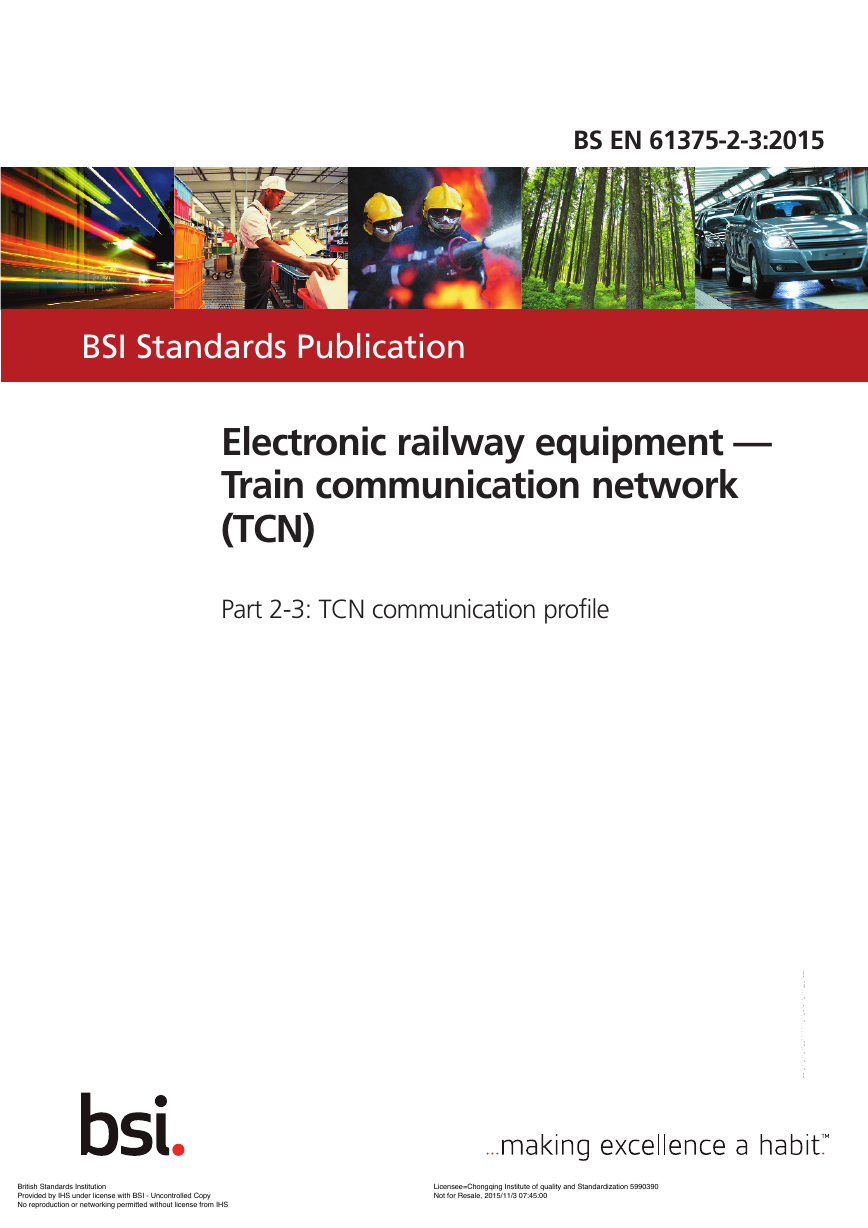
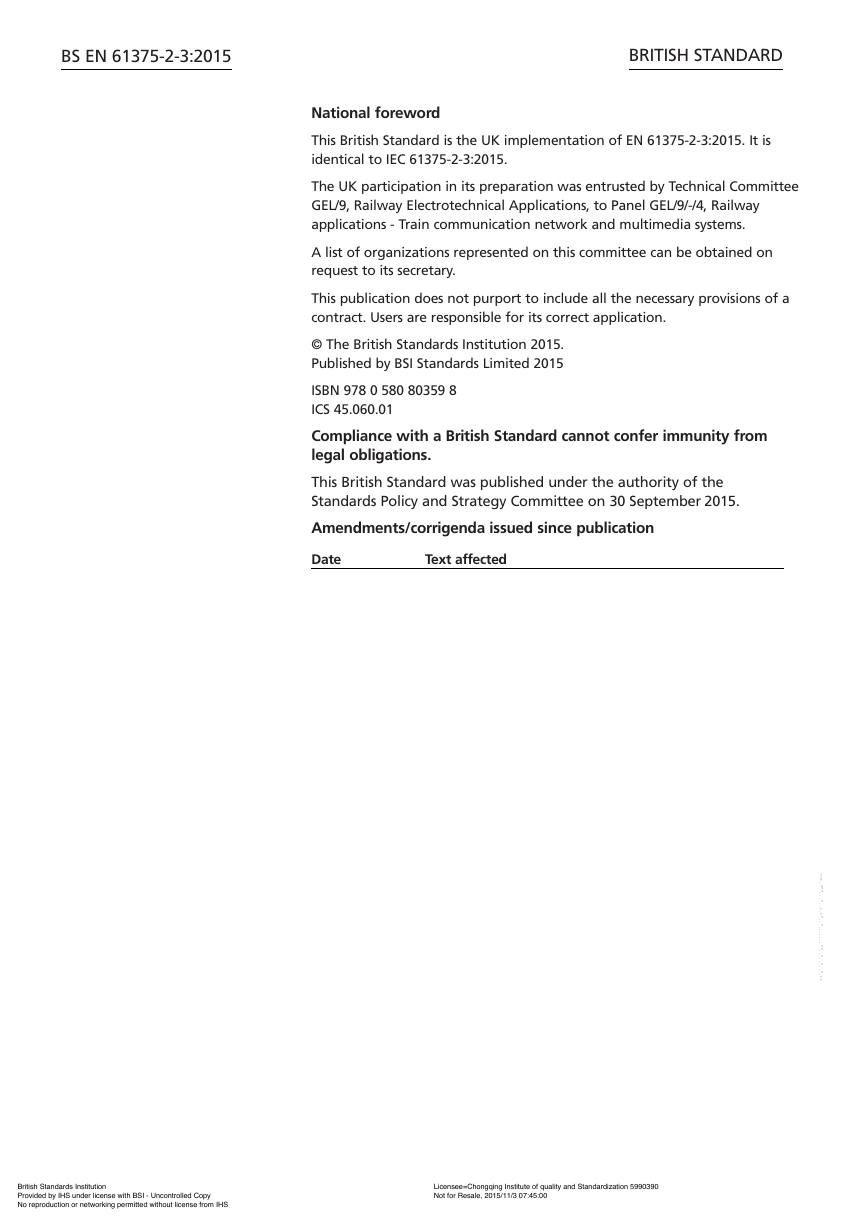
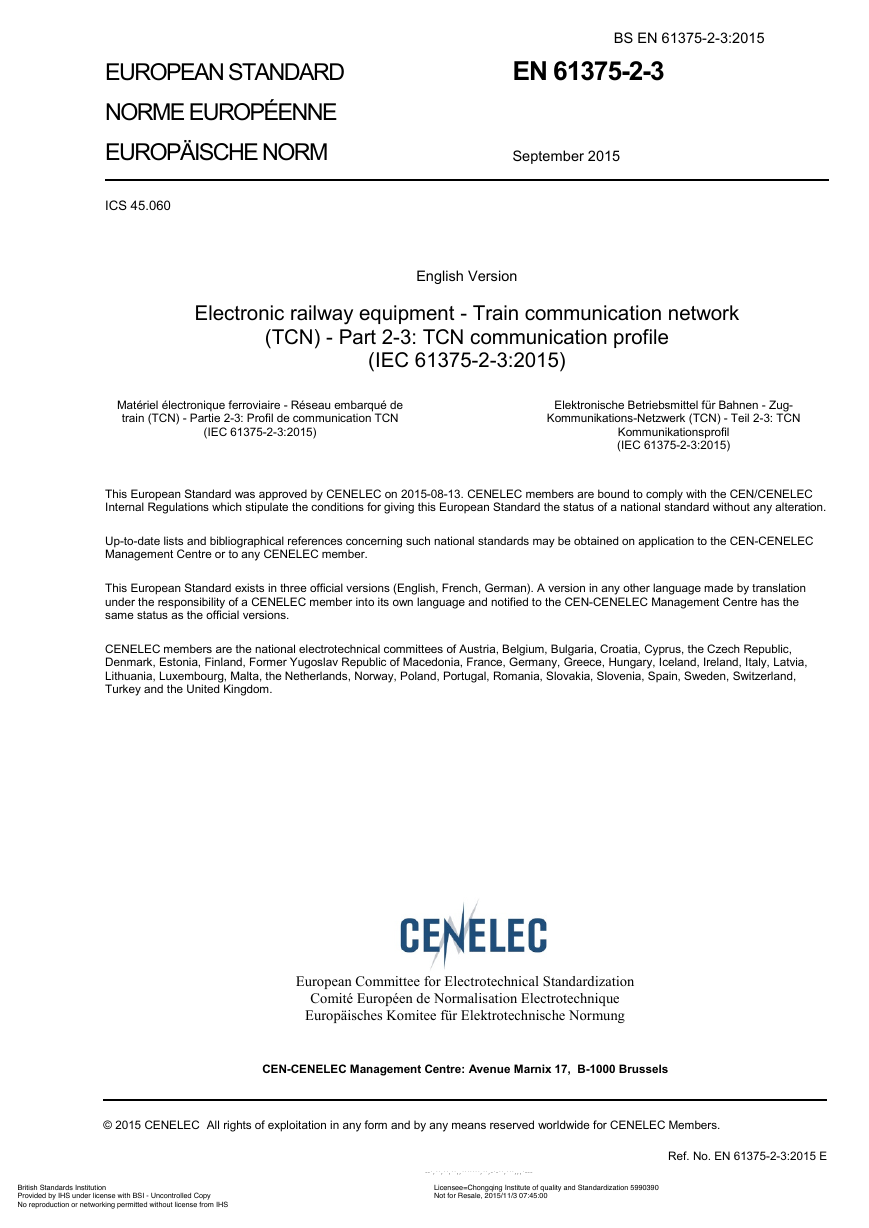
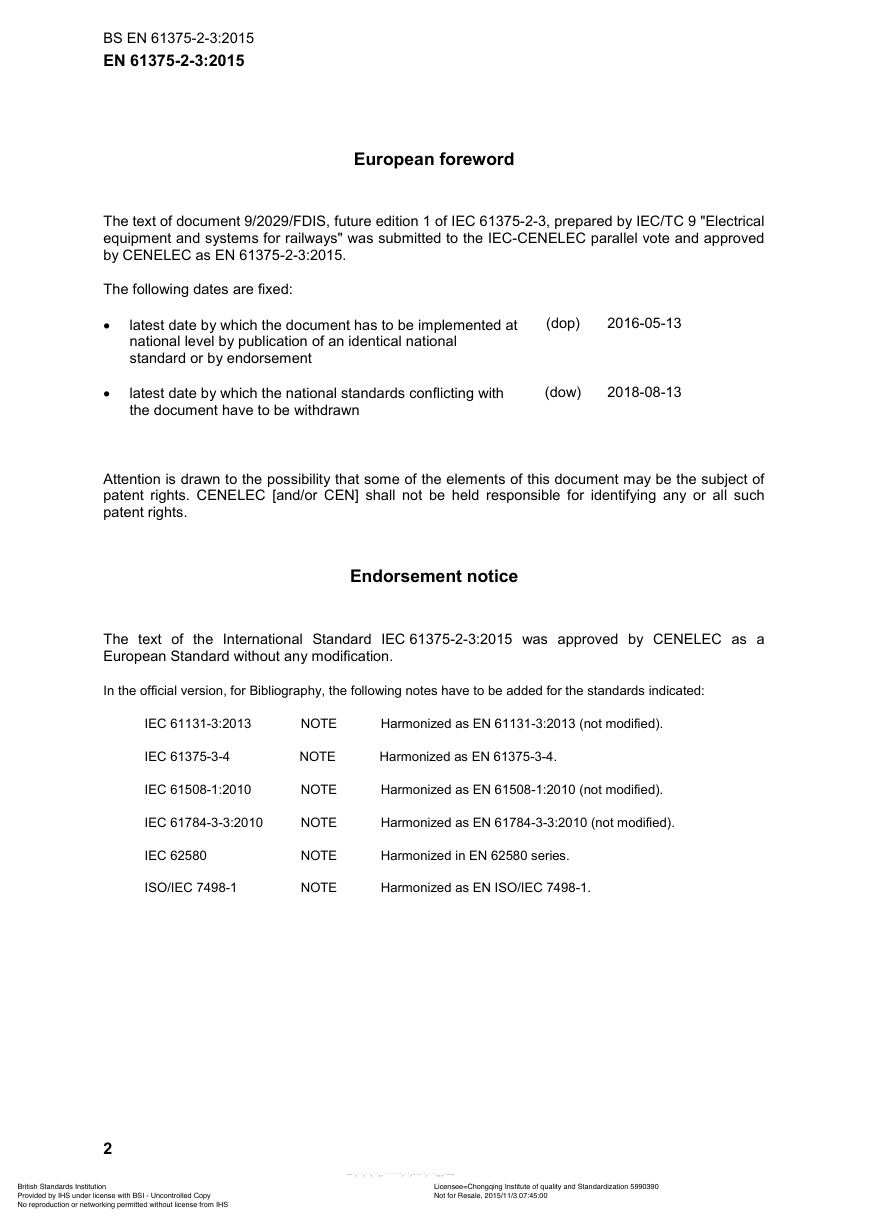
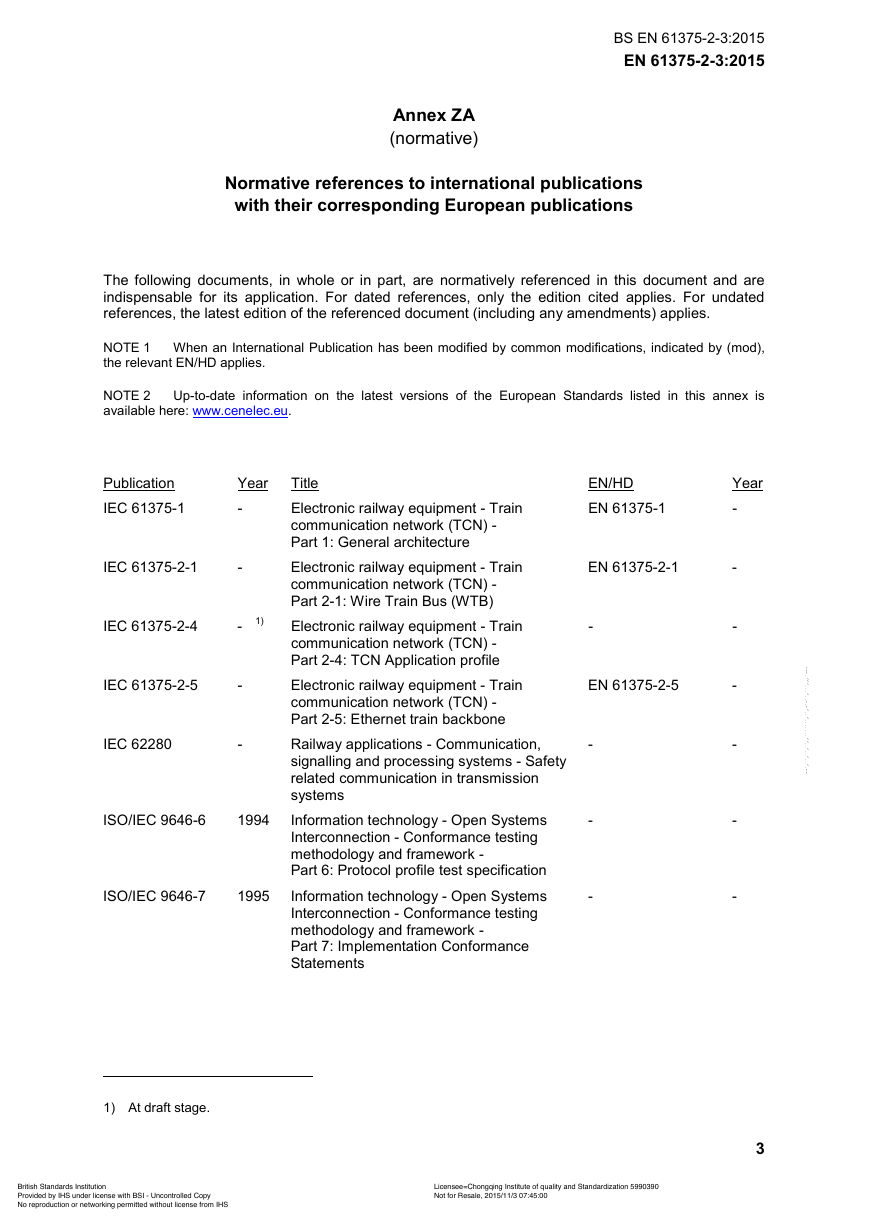
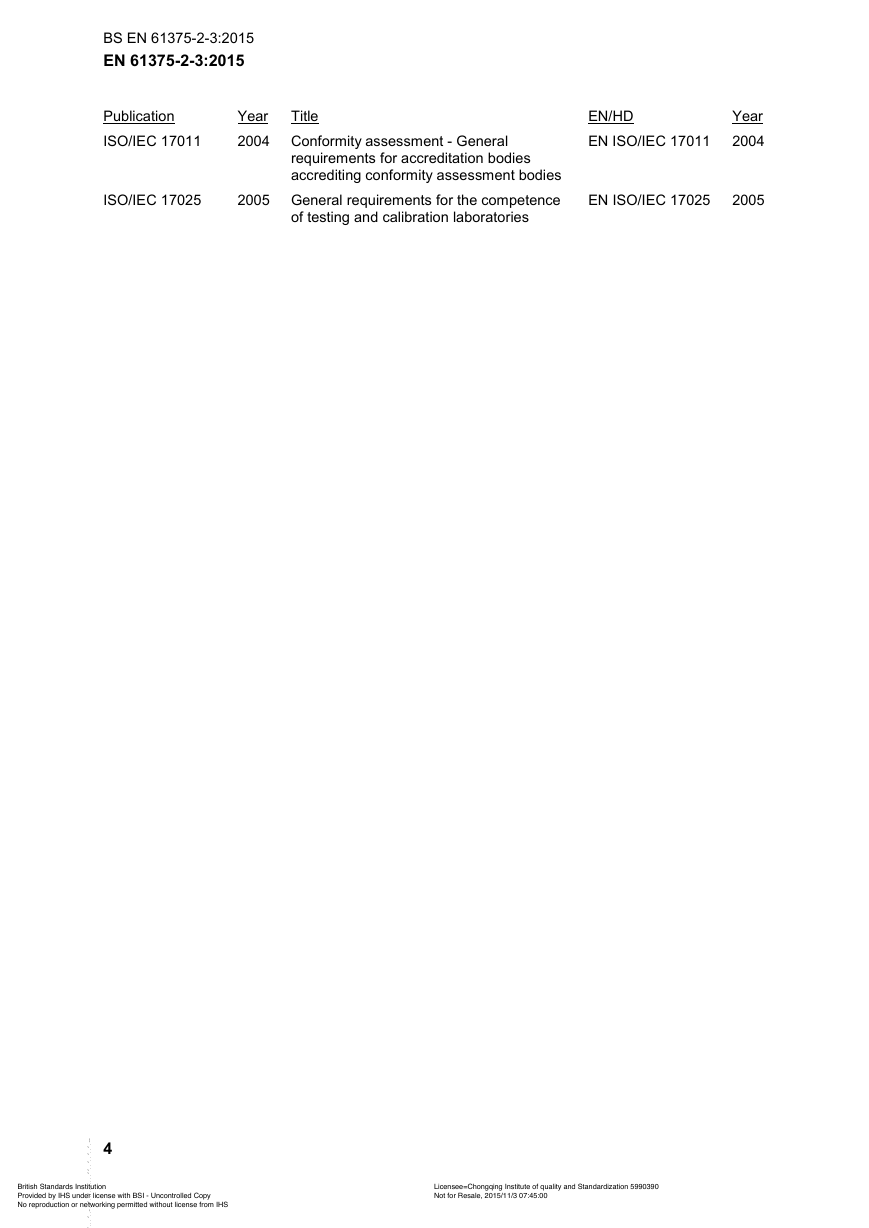
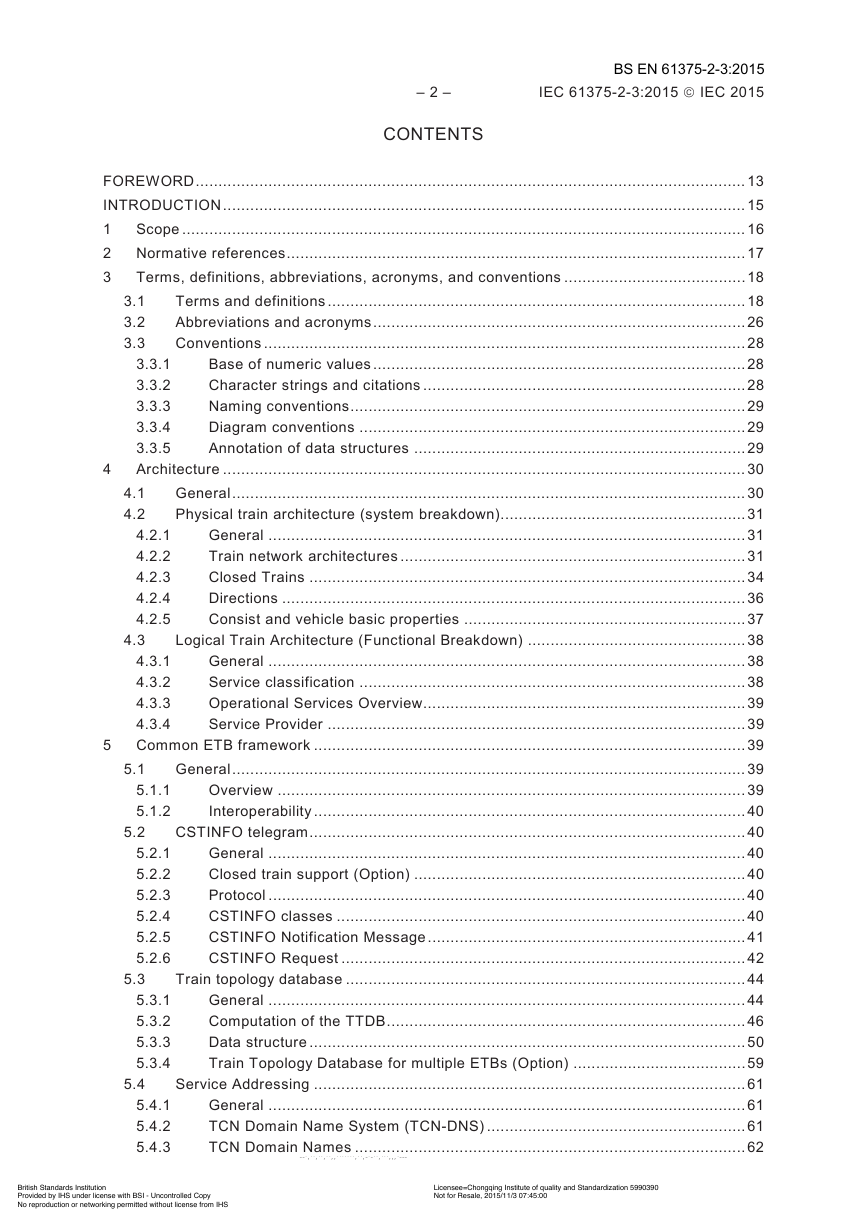









 2023年江西萍乡中考道德与法治真题及答案.doc
2023年江西萍乡中考道德与法治真题及答案.doc 2012年重庆南川中考生物真题及答案.doc
2012年重庆南川中考生物真题及答案.doc 2013年江西师范大学地理学综合及文艺理论基础考研真题.doc
2013年江西师范大学地理学综合及文艺理论基础考研真题.doc 2020年四川甘孜小升初语文真题及答案I卷.doc
2020年四川甘孜小升初语文真题及答案I卷.doc 2020年注册岩土工程师专业基础考试真题及答案.doc
2020年注册岩土工程师专业基础考试真题及答案.doc 2023-2024学年福建省厦门市九年级上学期数学月考试题及答案.doc
2023-2024学年福建省厦门市九年级上学期数学月考试题及答案.doc 2021-2022学年辽宁省沈阳市大东区九年级上学期语文期末试题及答案.doc
2021-2022学年辽宁省沈阳市大东区九年级上学期语文期末试题及答案.doc 2022-2023学年北京东城区初三第一学期物理期末试卷及答案.doc
2022-2023学年北京东城区初三第一学期物理期末试卷及答案.doc 2018上半年江西教师资格初中地理学科知识与教学能力真题及答案.doc
2018上半年江西教师资格初中地理学科知识与教学能力真题及答案.doc 2012年河北国家公务员申论考试真题及答案-省级.doc
2012年河北国家公务员申论考试真题及答案-省级.doc 2020-2021学年江苏省扬州市江都区邵樊片九年级上学期数学第一次质量检测试题及答案.doc
2020-2021学年江苏省扬州市江都区邵樊片九年级上学期数学第一次质量检测试题及答案.doc 2022下半年黑龙江教师资格证中学综合素质真题及答案.doc
2022下半年黑龙江教师资格证中学综合素质真题及答案.doc